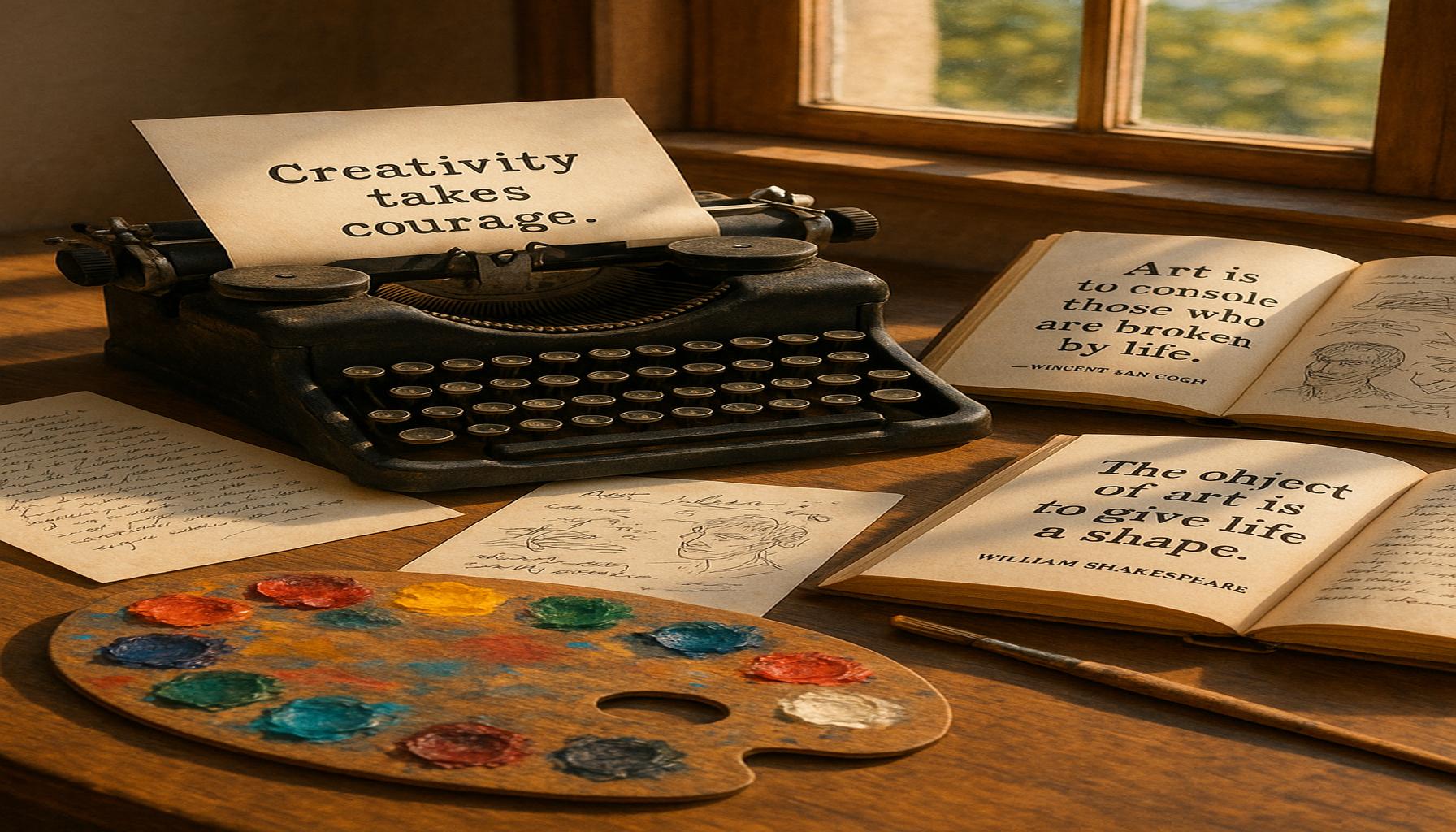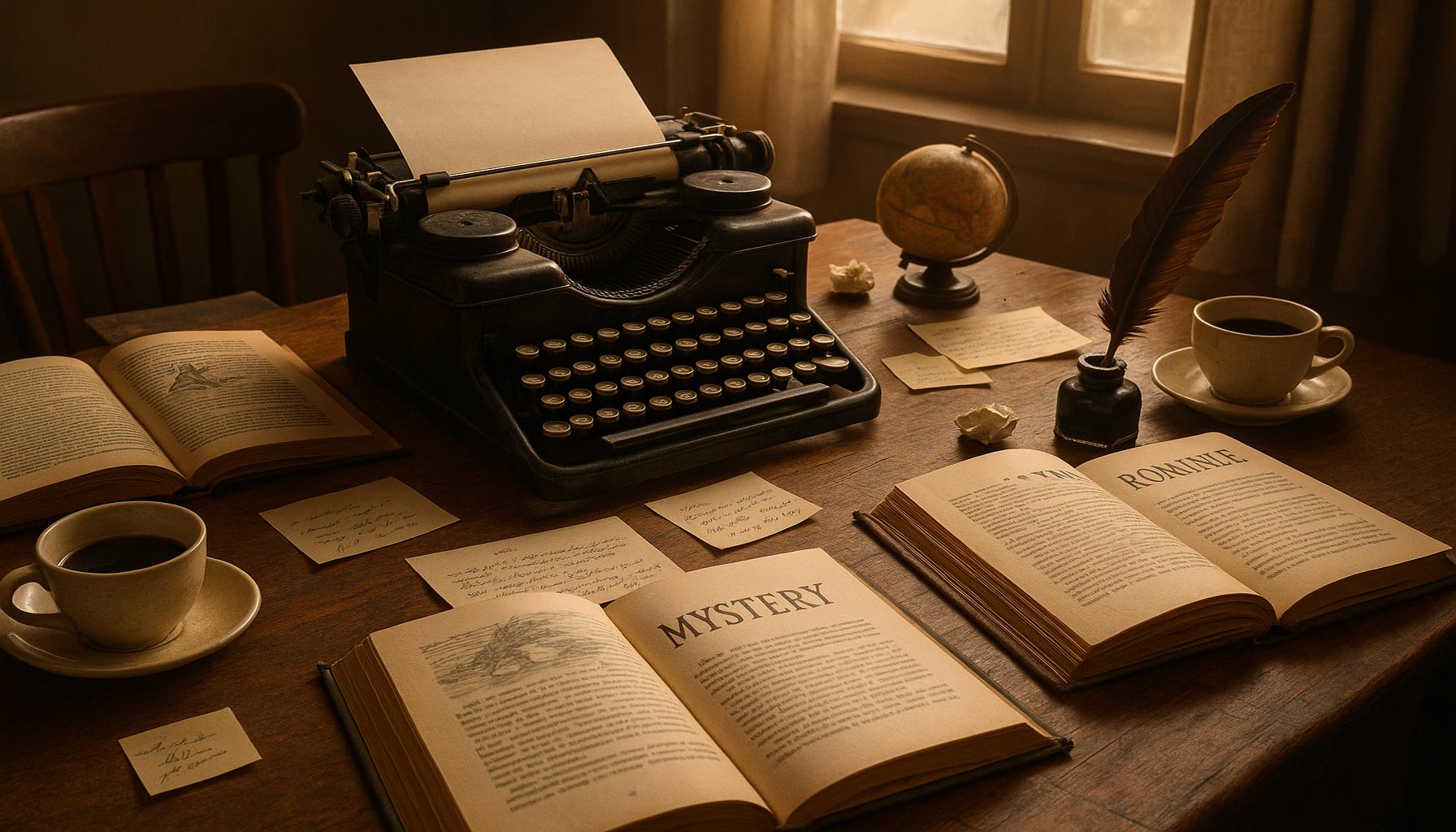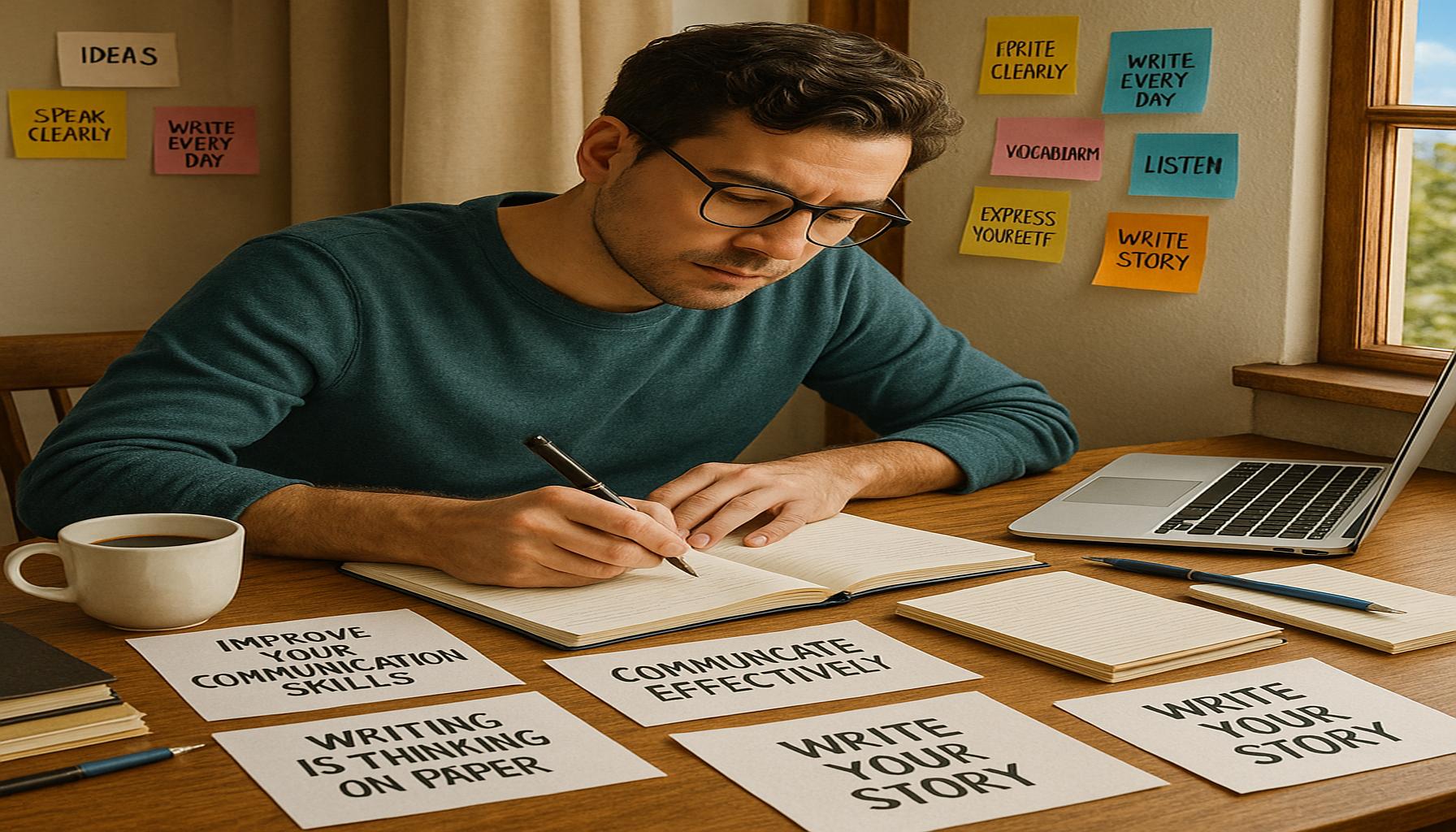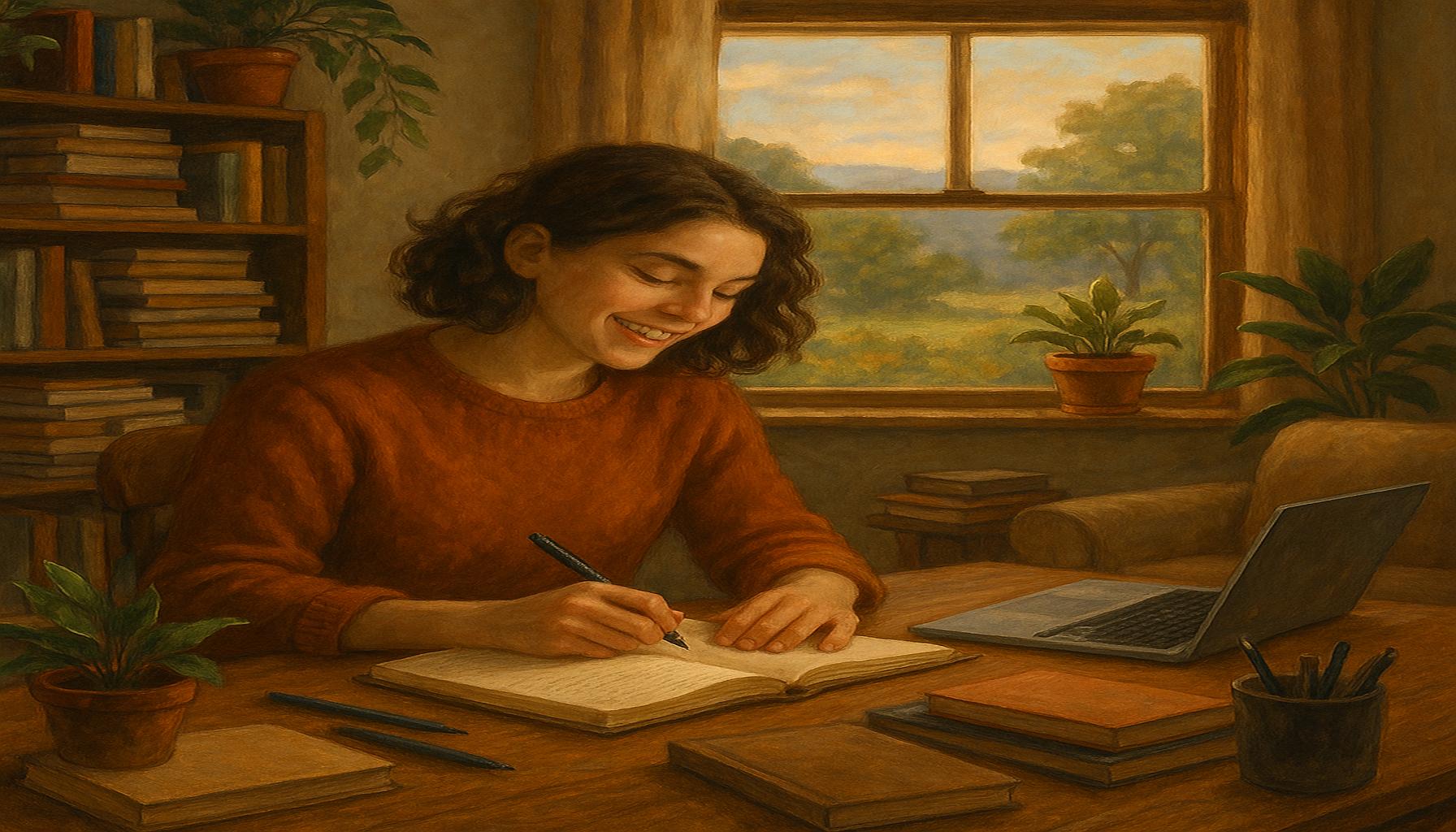Creative Writing Techniques to Ignite Creativity Enhance Artistic Expression

Unleashing Creativity Through Writing
Creative writing is more than just putting words on a page; it is an art form that can significantly enhance one’s passion for creative hobbies. By exploring various writing techniques, individuals can unlock new realms of imagination and foster their artistic expression. Whether you’re a seasoned author or a casual journal keeper, these methods can transform your approach to creativity.
The Impact of Writing Techniques
Embracing diverse writing strategies can lead to profound shifts in how we express ourselves. Here are some crucial points to consider:
- Inspiration from Different Mediums: Drawing ideas from various art forms can stimulate originality.
- Structure and Freedom: Balancing creative freedom with structured techniques can boost productivity.
- Reflection and Revision: The process of revising work can often lead to unexpected insights and improved skills.
As we delve deeper into this subject, prepare to discover our Top 5 Creative Writing Techniques that can help elevate your artistic journey. These techniques not only provide practical tools for expression but also help in nurturing a vibrant creative spirit.
Top 5 Writing Techniques That Spark Creativity and Enhance Artistic Expression
Writing is a profound form of artistic expression. Whether you’re a seasoned writer, an aspiring novelist, or someone who casually writes in the margins of their creative pursuits, the way you utilize writing can significantly affect your artistry. It serves as both a canvas and a brush to paint the vivid images and intricate stories that live in your imagination. To tap into this potential and unleash your creative prowess, exploring diverse writing techniques is crucial. In this article, we dive deeply into five writing techniques that can spark your creativity and elevate your artistic expression.
5. Free Writing
Free writing is a straightforward yet powerful technique. It involves setting a timer and writing continuously for that duration, paying no heed to grammar, punctuation, or even coherence. The primary goal is to let your thoughts flow unrestrained onto the page, thereby facilitating the subconscious mind to express itself.

This liberating form of writing has been a go-to exercise for numerous writers seeking to warm up their creative muscles. It is akin to stretching before a run—shedding inhibitions and preparing your mind for the burst of creativity that follows. During free writing, writers often surprise themselves with unforeseen ideas or themes that emerge from the recesses of their minds.
Here are some tips for effective free writing:
- Set a time limit (5 to 20 minutes): This constraint provides a focus and pushes you to truly empty your thoughts onto paper.
- Choose a specific prompt, or let your mind wander freely: Both methods can be fruitful. A prompt can steer your thoughts in a particular direction, while free wandering can uncover unexpected inspiration.
- Don’t worry about mistakes—just write!: The beauty of free writing is in its raw and unrefined nature. Mistakes are not only acceptable but encouraged.
While some may find the barrage of unrefined content challenging, the breakthrough moments can validate the effort, nudging this technique into the fifth spot on our list.
4. Character Development Journals
Characters are the heart and soul of storytelling. They breathe life into plotlines and connect readers to narratives on a personal level. Character development journals are an indispensable tool for creating rich, multifaceted characters.
Maintaining a journal dedicated to character exploration allows writers to delve deeply into their characters’ psyches. Details like background stories, motivations, desires, strengths, flaws, and unique quirks are crucial in crafting relatable and authentic characters.
Such detailed exploration results in more compelling narrative arcs. As writers immerse themselves in a character’s world, the resultant emotional depth seeps into their writing, enhancing the overall quality of the work. While the investment in maintaining these journals is substantial, the payoff in terms of enriched storytelling is invaluable.
Components of a Character Development Journal
- Background stories: Understanding where a character comes from can guide their actions and decisions in your story.
- Motivations and desires: Knowing what your character wants drives the plot forward.
- Character strengths and flaws: Real people are a mix of both, and characters should be no different.
- Unique quirks or behaviors: These make characters memorable and distinguish them from others.
The intricacies of character development demand attention, relegating this technique to fourth place despite its critical importance.
3. Writing Prompts
Even the most experienced writers face creative blockages. Writing prompts are artistic lifelines, designed to rekindle inspiration and foster creativity. Prompts can vary widely in format, serving as catalysts to push writers into previously unexplored territories.
They offer the freedom to explore without the pressure of self-imposed expectations. Prompts can be utilized for initiating new projects or overcoming the dreaded writer’s block, functioning as creative bridges to new ideas.
Types of Writing Prompts
- Visual prompts: Images or paintings can ignite descriptive imaginations.
- Textual prompts: Simple phrases or quotes can lead to elaborate narratives.
- Scenario-based prompts: “What if” situations open avenues for speculative writing.
While invaluable as inspirational aids, prompts serve as ancillary tools rather than foundational techniques, thus taking the third spot on this list.
2. Mind Mapping
In creativity, sometimes the best route is a non-linear one. Mind mapping is a visual brainstorming technique that helps writers organize ideas and concepts creatively. This method propels the brain to make connections that might go unnoticed in traditional linear approaches.
A mind map begins at a central theme, branching into related ideas and concepts. This form of mapping not only provides a clearer picture of the narrative landscape but also stimulates unexpected insights and relationships within the material.
Creating Effective Mind Maps
- Start with a central theme or idea, allowing it to anchor your explorations.
- Branch out to subtopics and related concepts, expanding the scope of your narrative.
- Use colors and images to visually represent ideas, enhancing comprehension and recall.
Encouraging innovative connections, mind mapping is notably beneficial for both character development and plot structuring, worthy of its second-place rank.
1. Storytelling Frameworks
At the pinnacle of our list is the use of storytelling frameworks. These are structured templates like the Hero’s Journey, Three-Act Structure, or Story Circle that guide the narrative flow of a story. These frameworks are vital as they provide a structural backbone, ensuring that narratives are cohesive and engaging.
They help plot a clear direction for stories, enhancing tension, and ensuring effective resolution, all while aligning character development with plot progression. Frameworks serve not as rigid guidelines but as blueprints that can be creatively adapted to fit the unique elements of your story.
Benefits of Storytelling Frameworks
- Clear direction: Guides narratives seamlessly from beginning to end.
- Effective tension and resolution: Maintains reader engagement through well-placed climaxes and resolutions.
- Character and plot alignment: Ensures holistic character journeys are reflected consistently throughout the narrative.
Mastering these frameworks is akin to learning the scales before composing symphonies—they are foundational yet flexible, deserving their place at the top of our list for creative and effective storytelling.
Delving into these five writing techniques can significantly enhance both the creative and expressive facets of your writing. Each, with its nuances, offers unique advantages and can be integrated into your practice according to your needs and preferences. As you explore them, you’ll find that your writing becomes a more fulfilling pursuit, marked by creativity and clarity. Happy writing!
| Category | Key Features | Advantages | Disadvantages | Who Benefits Most |
|---|---|---|---|---|
| Free Writing | A technique where the writer writes continuously for a set period without worrying about grammar or structure. | Fosters creativity by minimizing self-editing barriers; allows unfiltered thoughts to flow. | Can produce cluttered text requiring significant revision; results may initially seem trivial. | Aspiring writers and artists looking for inspiration or to break through creativity blocks. |
| Journal Prompts | Using specific questions or statements to provoke deeper reflections and creative writing. | Encourages exploration of personal themes; helps in developing a unique voice and style. | Prompts can feel constricting to some; not all individuals may find them inspiring. | Anyone seeking to enhance self-awareness and creativity in their writing process. |
| Mind Mapping | A visual organization of thoughts and ideas related to a main concept. | Encourages brainstorming and the connection of disparate ideas, aiding in idea generation and structure. | Can be overwhelming with too much information; requires a certain level of artistic skill or inclination. | Writers and creatives needing visual input to spark ideas and establish a clearer direction. |
| Character Development Exercises | Activities designed to create complex characters, exploring their backgrounds, motivations, and desires. | Enhances storytelling depth; allows writers to create relatable characters that resonate with audiences. | Excessive focus on characters might detract from plot development; not all writers may enjoy this method. | Novelists, screenwriters, and playwrights aiming to enhance character realism and engagement. |
Frequently Asked Questions About Writing Techniques to Unleash Creativity and Enhance Artistic Expression
What are the key techniques for improving creative writing?
There are several techniques that can help writers enhance their creativity. One popular method is freewriting, where you write continuously for a set period without worrying about grammar or spelling. This method encourages spontaneous ideas, bypassing self-criticism. Another technique is mind mapping, which helps organize thoughts visually and explore connections between concepts. Additionally, some authors find inspiration in the “cut-up” technique, which involves rearranging words from existing texts to create something new.
How can I overcome writer’s block using artistic expression techniques?
Writer’s block can be challenging, but there are strategies to overcome it. Engaging in creative exercises like writing prompts or storytelling games can stimulate the mind. Practicing mindfulness and meditation can also reduce anxiety and spark new ideas. Furthermore, allowing yourself to explore different genres and styles without constraints can lead to unexpected inspiration and breakthrough moments.
Do these writing techniques apply to all genres and forms of writing?
Most of these techniques are universally applicable across genres and writing forms. The key is to adapt the techniques to fit the specific style and requirements of your project. For instance, freewriting might be particularly useful for fiction writers, while structured brainstorming could benefit non-fiction authors. Understanding your personal writing goals and experimenting with different techniques will help identify what works best for you.
Can writing techniques improve communication skills in addition to creativity?
Absolutely. Writing techniques not only foster creativity but can also enhance overall communication skills. Techniques like mind mapping help in structuring thoughts clearly, which is crucial for effective communication. Similarly, practicing various styles and voices expands your ability to express ideas in diverse ways, making your communication more versatile and engaging.
What role does feedback play in refining creative writing techniques?
Feedback is an invaluable component in refining writing techniques. It provides insight into how others perceive your work and highlights areas for improvement. Constructive criticism from peers or mentors can offer new perspectives and inspire fresh ideas. Moreover, engaging with a community of writers can be motivating and offer support as you evolve and adapt your creative techniques.
Conclusion
The exploration of writing techniques that ignite creativity and enhance artistic expression is not just an intellectual exercise; it is a doorway to a richer, more fulfilling creative journey. As we have navigated through the array of methodologies, from stream of consciousness and mind mapping to free writing, narrative structuring, and listing, a recurring theme emerges: the importance of breaking conventional boundaries to unleash the full potential of the human mind.
These techniques, grounded in both tradition and innovation, serve as tools for writers and artists seeking to hone their craft. They offer a structured yet liberating framework that channels raw thoughts into coherent and compelling narratives or visuals, paving the way for profound artistic output. The beauty of these techniques lies in their adaptability; while they offer a foundational structure, each individual can mold them to fit personal styles and objectives, leading to unique artistic manifestations.
Furthermore, embracing such techniques contributes significantly to self-discovery and growth. Writers learn to translate complex emotions and abstract concepts into language that resonates, resulting in work that is both authentic and inspired. This journey of harnessing creativity through writing not only strengthens artistic skills but also broadens the understanding of narrative and expressiveness across various domains.
Ultimately, these writing methods are invaluable to anyone engaged in creative hobbies, encouraging them to push beyond the status quo and explore uncharted territories of their imagination. As our exploration comes to a close, the invitation stands: delve deeper into these concepts, experiment without inhibition, and let your creativity flourish to new heights. The artistic world awaits what you have to offer—unique insights that only you can express.


